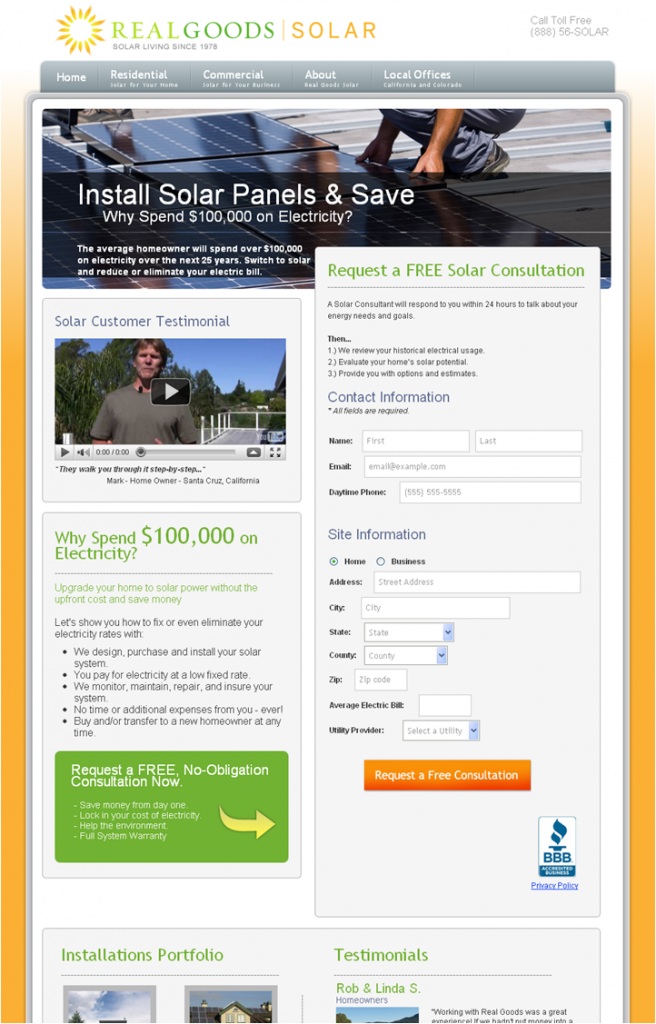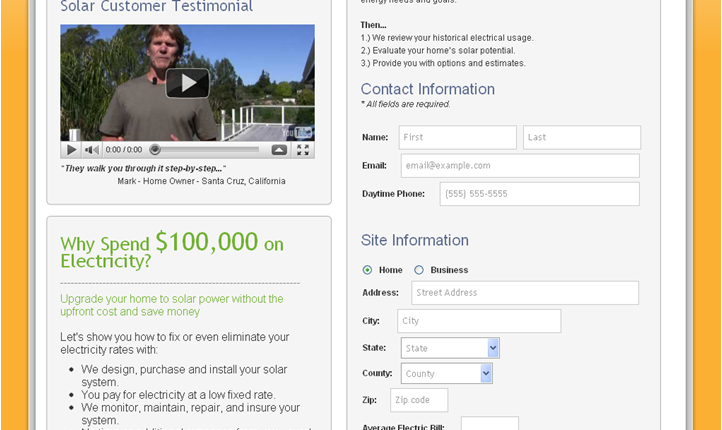
Relevance is not born on your landing page. Relevance starts with the ad that the visitor clicked. With SES New York right around the corner (hope to see you there!), I wanted to discuss how your ads effectively shape your site visitors’ motivation. When you understand motivation, you can build ad-page pairs that maximize relevance, and consequently conversion.
Recently, I discussed how clarity helped RealGoodsSolar landing page keep visitors on the page. Today, I wanted to take a closer look at the different motivations that their landing page meets from paid Facebook, LinkedIn and AdWords traffic.
Different ads are different reasons for getting to your landing page
Facebook and LinkedIn ads likely do not compete side-by-side with similar offers, and therefore the visitors are on average not as highly motivated as those performing a deliberate search (a more explicit indicator of motivation). With paid search, ads likely show up alongside competitors, so you must compete more for the click, but as a reward you can expect higher motivation levels.
In both cases, the visitor did not just magically end up on the landing page. The content of the ad is what caused the visit, and therefore we can use it as a resource to create relevance.
This often means that you need different landing pages for different types and levels of motivation. While you can—as this landing page does—offer different calls to action (e.g., request for a sales call vs. request for a newsletter) to appeal to different visitor motivations on the same page, competing calls to action will increase confusion.
Test for relevance to minimize competing objectives
Since your ads are under your control, test landing page content and calls to action to assess the motivation of visitors from each ad. Conversely, the ads can be written and tested to drive a specific behavior on the landing page.
For instance, an extensive ad that details an offer with a price tag likely will deliver highly qualified visitors, but will sacrifice traffic volume because potential visitors will self-disqualify and never click.
On the other hand, our research has shown that selling through an ad is not as effective as selling on a landing page, and using your ad to get a click (as opposed to a decision to buy) may be a better strategy. This will deliver relatively lower-quality traffic, but significantly higher volume, including visitors that can be entered into a nurturing program.
To test properly, you will need to create a financial model that takes into account your CPC (cost per click), cost of nurturing (a.k.a. “total cost per acquisition” or “cost of sales”) and the average order size (or, if possible, customer lifetime value)—not just the immediate conversions.
Related resources
How to optimize your banner ad performance while complying with new privacy regulations — Webinar, Thursday, March 31, 2011, 1-2 PM.
Optimization Summit 2011 – June 1-3
Landing Page Optimization: Minimizing bounce rate with clarity
Maximizing Optimization Opportunities: 3 Simple Visitor Types



